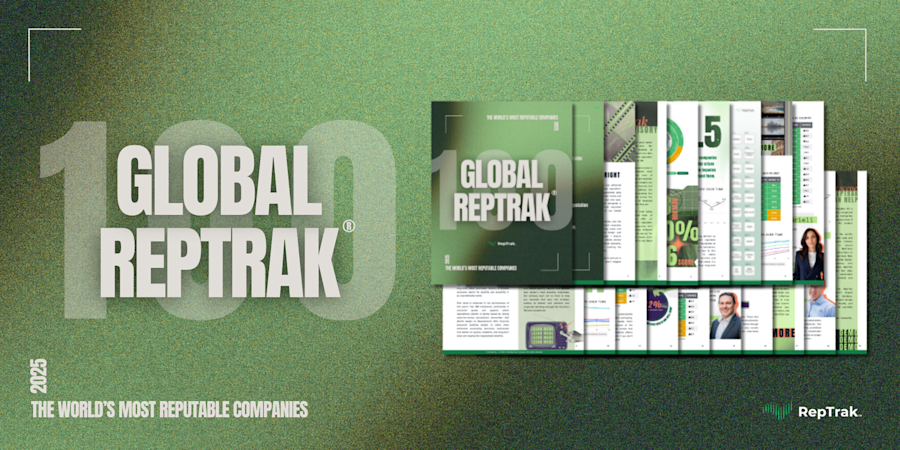How to Shift Fence-Sitters to Promoters
Blog Post29 Aug, 2019
Even the most well-loved companies have fence-sitters, consumers who are neutral, hesitant, or simply not sure about giving their full support.
In fact, the 2019 U.S. RepTrak study found that on average, nearly half (49%) of the informed general public stands on the fence in their willingness to buy from companies, trust them, or engage with them as employees or investors.
Promoters, on the other hand, those inclined to actively support companies, account for an average of 43% of the total informed general public, while detractors, those that deliberately resist any form of interaction, represent less than 10%.
Fence-sitters sit at the tipping point. If motivated in either direction they can shift to a promoter or a detractor. Fence-sitters represent growth opportunities and loss thereby deeming this indecisive segment increasingly important to understand and activate.
Below, we take a further look at why fence-sitters represent a key business issue and how they can ultimately be convinced to take a stand for the better.
Why do fence-sitters matter?
Fence-sitters exist among your target audiences. This means at least one in every five consumers is neutral or ambivalent about their behavior towards a given company.
Reputation is a predictive metric. Those who rate a company with having an excellent reputation are much more likely to buy from that company, give it the benefit-of-the-doubt in times of crisis, and even to possess a desire to work for that company. Using our 0–100 reputation scale, reputation among fence-sitters in the U.S. is on average, 6.4-points lower than the overall population and 21.7-points lower than that of promoters. Fence-sitters are emotionally disconnected and this translates into less purchase intent and less of a willingness to grant your company with a license-to-operate.
Fence-sitters are particularly vulnerable to reputation risk. The U.S. RepTrak analysis has found that if a tech company launched a faulty product, the negative impact on its reputation would be twice as high among fence-sitters than among the general public. This is only one example of how fence-sitters are more reactive and vulnerable to reputation risk than the average consumer. In any sort of risk scenario, from negative CEO exposure to data breaches, the reputation decline among fence-sitters is additionally detrimental. If companies do not proactively manage their fence-sitter segment, critical situations can quickly transform them into detractors.
In sum, the upside to reducing the number of fence-sitters towards your company lies in its potential to boost your reputation, increase support, and strengthen your ability to bounce back after a crisis. Focusing on your fence-sitters and getting to the bottom of what resonates with them is one way to proactively manage your reputation.
Shifting from fence-sitter to promoter
Understand what drives them. A first step is learning about what fence-sitters expect from companies. Our research suggests that a company's reputation among fence-sitters is mostly impacted by perceptions of its Products & Services and Corporate Governance, to a greater extent than the overall population. Moving the reputation needle among fence-sitters will require companies to go take a step further in connecting what they sell with their attitudes towards transparency, ethical behavior, and fairness in business. From a reputation management perspective, understanding how this varies by industry and market will also be important for anyone focused on fence-sitter activation.
Invest in your brand strength. Stronger brands generally trigger greater decisiveness among consumers. Companies that stand out for having a lower proportion of fence-sitters in the U.S., (Amazon, Nike, Netflix), also score exceptionally high in their brand perceptions. Appearing genuine and delivering a consistent experience contribute to less ambivalence towards your company.
Be strategic with your channels. Once you define the messaging that resonates with your fence-sitter group, defining the optimal channel strategy comes next. Ri's touchpoint impact analysis indicates that having direct experience with the company or consuming its owned media has the largest positive reputation impact among fence-sitters. These touchpoints are opportunities where companies can shape and control their corporate narrative, either by designing a meaningful purchase experience or through relevant owned media in digital or traditional channels.
Proceed with caution: convince your fence-sitters don't polarize them.
The single corporate brand with the lowest proportion of fence-sitters in the 2019 U.S. RepTrak also happens to be among the least reputable: The Trump Organization.
In this example and exception to the general rule, a lower proportion of fence-sitters simply means more polarized perceptions among the general public. The divisive emotional reaction towards the Trump Organization pushes people off the fence and into one extreme or the other.
It's subsequent poor reputation score of 33.8 only further highlights the importance of fence-sitters. Companies must keep in mind that the opportunity is out there, and they are available to be convinced, while also being highly susceptible to turn their back against you.
Isadora Levy Senior Research Manager The RepTrak Company [email protected]






